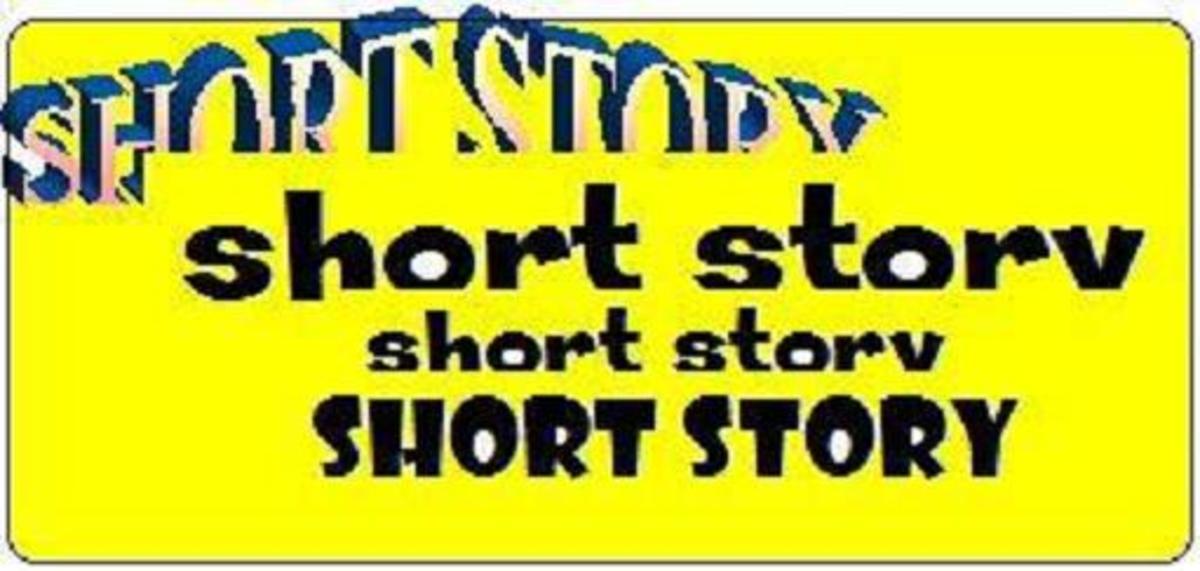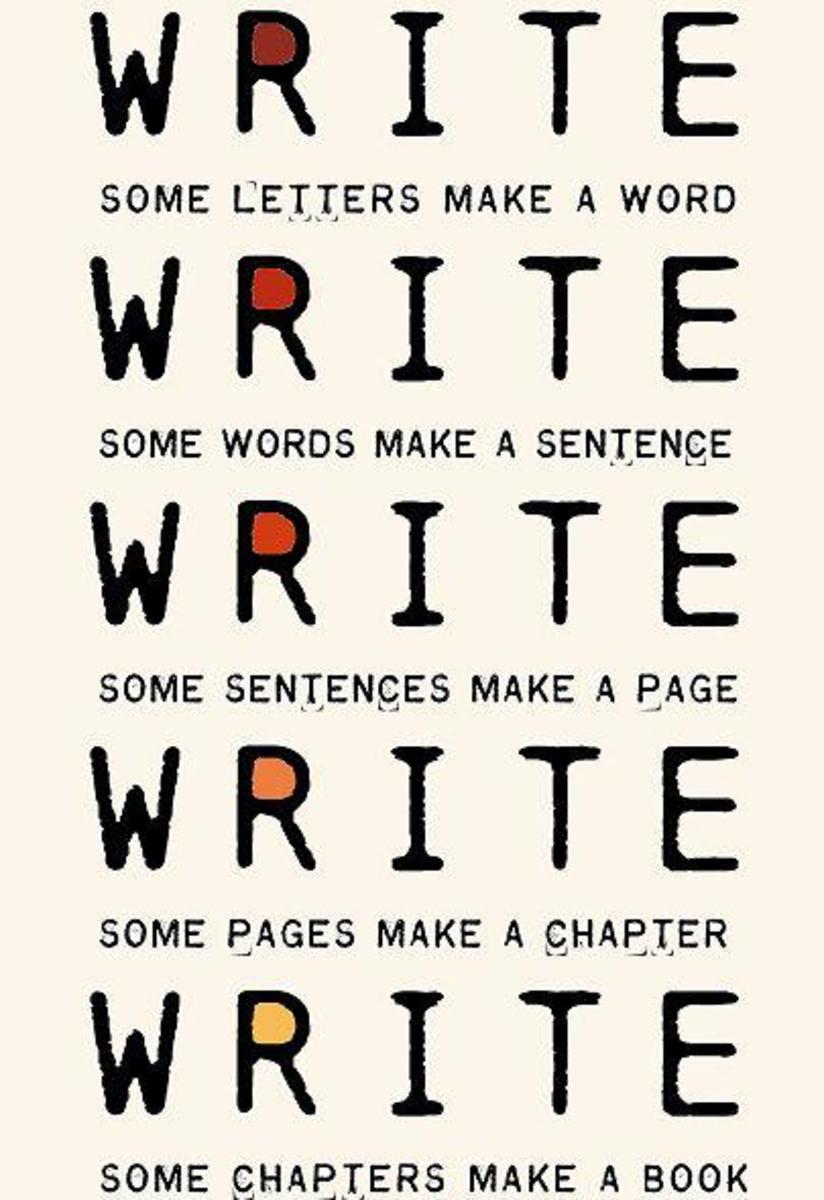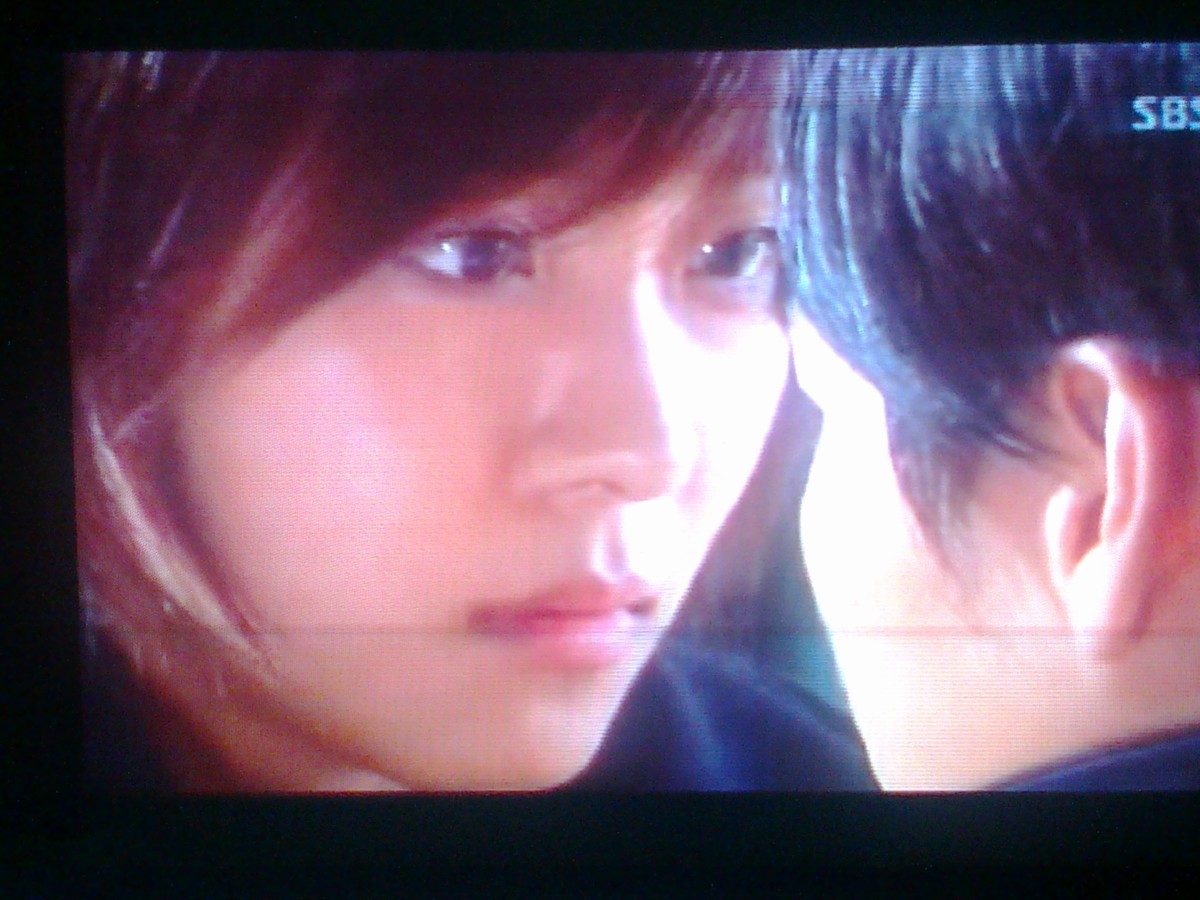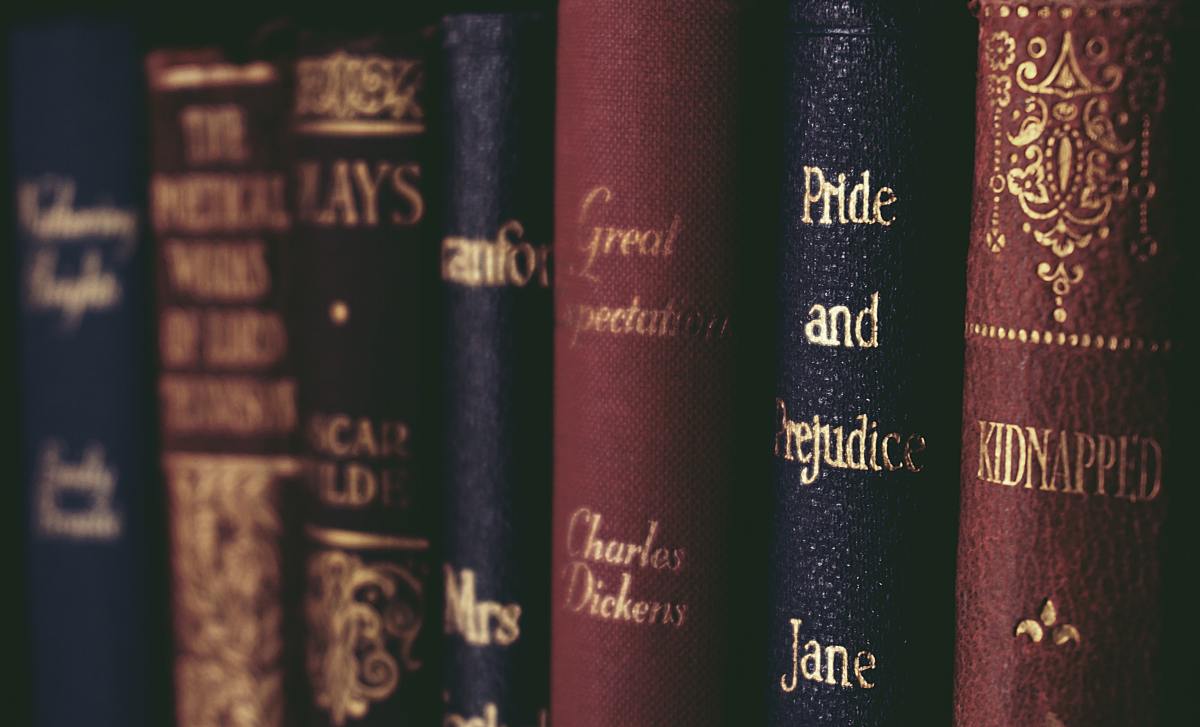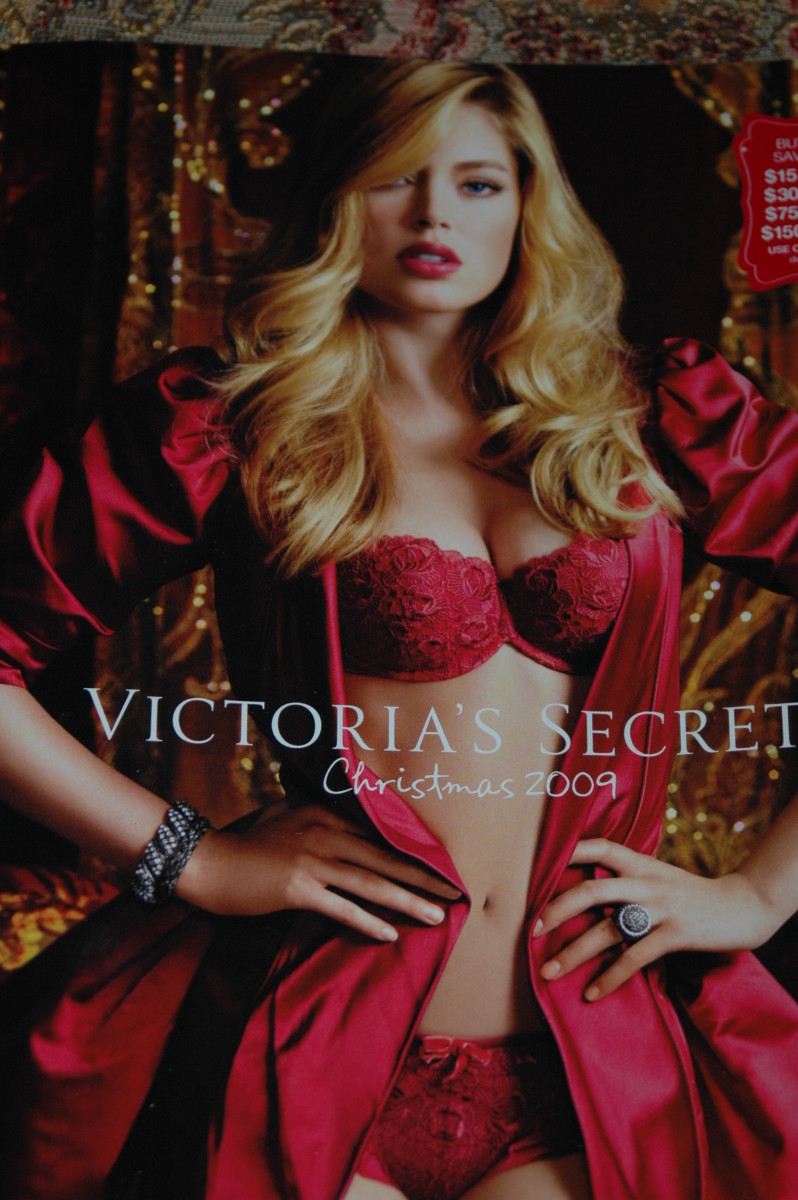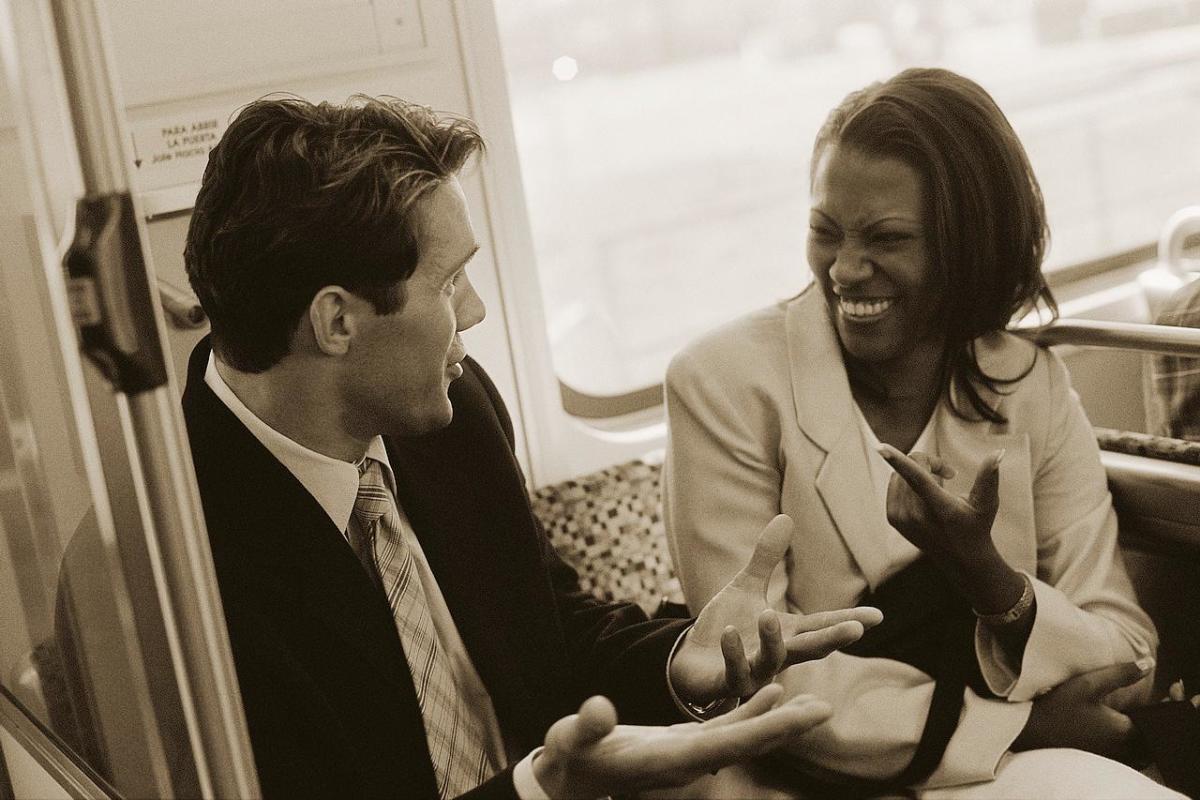Good Writing Is...#6 -- Plotting #2 -- The Scene Approach
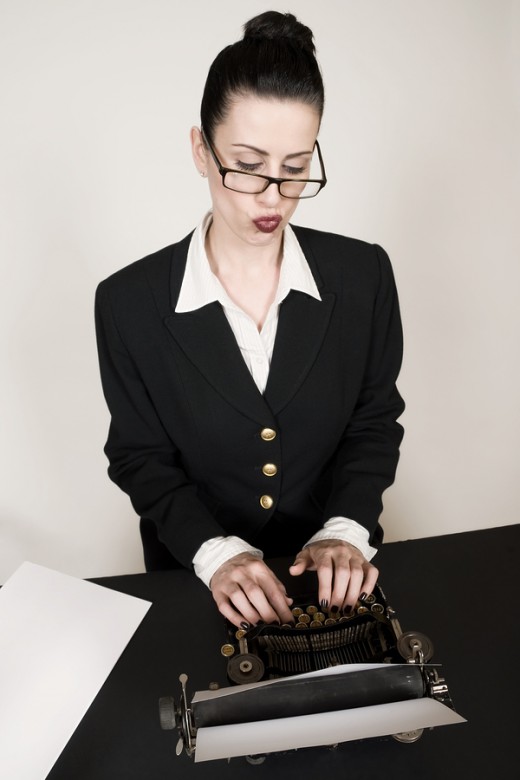
Welcome to this, the second hub dealing with plotting in fiction.
Plot lines are not “iron tracks”
I apologize for the passage of time between the last hub and this one. I’ve been involved in emergency surgery to the plot of one of my current projects, Fly High, Fly Blind, a novel with a complicated plot and many sub-plots, and found myself tied up with some major rewrites. I only mention it because we all make errors in plot; we all need to rewrite; we all need to be flexible in our plot lines.
So no, dear reader, you are not alone in having difficulties with your writing. There isn’t a writer in the world who doesn’t work like mad toward a goal, only to realize it doesn’t work. Then we truly need to find our creativity, and a new route to our destination while keeping the best of the scenery along the way.
Plot lines are not to be seen as “iron tracks,” fixed in their course and unchangeable. They are more like a penciled-in route on a map, which we can erase and change as we see fit – but necessary all the same, if we want to avoid driving aimlessly in circles.
To quote something I read somewhere, sometime:
"Failure to plan is planning to fail."
So, on with this article.
If you remember from the last (or if you don’t, now might be a good time to go back and review – http://hubpages.com/hub/Good-Writing-Is5-The-plot-thickens-plotting-for-beginners ) we looked at a proposed plot.
Today, we are going to take that plot, and decide how to present it, and plot the scenes (or chapters, if you prefer that term) that will carry our story.
For the purposes of this discussion, we will deal only with the main plot, and that is the story of Dick and Jane. Certainly, we also have subplots here: the story of Sally and her ill-fated affair with Dick; the story of the wayward daughter, Puff and the sickly son, Spot. We will deal with the subplots in the next article on subplots and backplots. For now, they exist only insofar as they relate to the relationship between Dick and Jane.
Step number one
First, we must take our narrative plot and decide how it may naturally be broken down into sections, which will then become our scenes. We may choose to do this by passage of time, or by installment of complications, however we wish, providing the end result follows a linear story form – one scene naturally leading into the next.
Here, I’m repeating a graph from the previous article to show the road map we’re shooting for.
Our road map structure
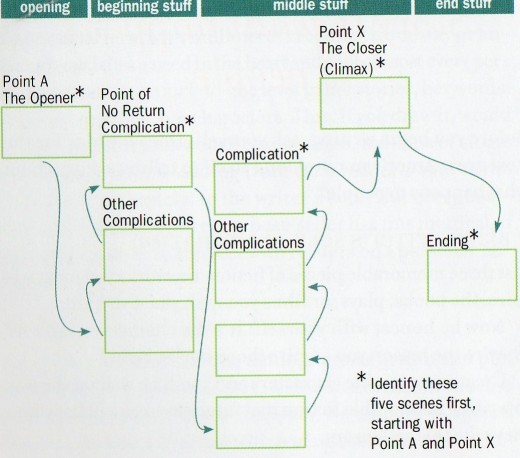
Our proposed plot
I’ve broken our plot into proposed scenes by use of a [[…]]
The story of Dick and Jane (and to a lesser degree, Sally, Puff and Spot)
[[ 1Dick, son of recent immigrants who worked hard to put their son through college but still live in a tiny house on the wrong side of the tracks, meets Jane, daughter of an ‘old money’ family who arrived on the Mayflower and entirely due to the hard work of industry baron ancestors live in a gracious estate in a rarified and wealthy enclave. They fall in love and want to get married. Both parents are against the marriage for entirely opposing reasons, and Jane’s parents vow there will be no financial assistance to her if she marries Dick. The two sets of parents meet and loathe each other. Dick and Jane marry anyway, ]] and [[ 2after years of struggle and sacrifice, they find themselves in a middle class home with the requisite two children, a boy with health issues and girl given to running wild who ends up pregnant at fifteen. Though the couple works hard to overcome these difficulties, the love that brought them together begins to fray under the strain]], and [[ 3Dick forms a relationship with his much younger secretary and believes himself in love. The secretary, Sally, becomes pregnant and Dick is torn between loyalty to his first family and a need to do the right thing by Sally. Eventually, Dick chooses to start a new life with Sally,]] but [[ 4 it isn’t long before this new relationship wears thin due to the age difference and Sally’s inability to provide the kind of home life to which Dick is accustomed. He regrets his choice, but thinks there is nothing he can do to change his circumstance and vows to make the best of things.]] Jane who has found a fulfilling job, petitions for divorce.]] [[ 5Sally has a miscarriage, and is fed up with Dick’s criticisms and runs off with Billy, a young man her own age.]] [[ 6 At the divorce hearing, Dick realizes the extent of the mistake he made, and admits it to Jane. Jane, still in love with her husband, listens and in a romantic scene of a great dinner and Dick’s opening up to Jane for the first time in years,]] [[ 7 followed by torrid sex, they make up and live happily ever after.]]
Granted, seven scenes is a little short for a novel but this is an example only, and unlikely to be a great literary work or a best seller, no matter how we divide it up. Scene 5 is likely to hold within it a subplot scene as it relates to Sally and Billy, but Dick's actions and reactions will form a master scene on their own.
Scenes in order of importance
Note the instructions on our graph --" identify these five scenes first." In order of importance, I take them as #1 -- the opener, perhaps the most important scene of any work: #2 -- the climax, our destination and the apex of all our action; #3 - the point of no return, the pivotal moment that sets the stage for all events to follow; #4 -- the set up complication leading to our climax and #5 -- the resolution and ending. These we will call our master scenes; the others we'll dub major scenes and those we'll fill in later, perhaps to add in story details of things leading up to our major scenes (i.e. the years of sacrifice and hard work, and/or the symptoms of love lost as the years go by) we'll call minor and those dealing with subplots, supporting scenes.
Which of these scenes is which?
The opener is of course #1; the climax is #6; the point of no return is #3; the final complication leading to our climax is #5 and our resolution and ending is #7.
So let’s start at the beginning
The opener - a master scene
Why, you’re probably wondering did I take all this into one scene when surely the opener should be when Dick and Jane meet at college and shouldn’t we have a number of scenes giving all this background information? Well, we could do it that way.
But our opener should leap right into the story, and our story isn’t boy meets girl, falls in love, battles parents, gets married and they live happily ever after. No, our real story starts with the marriage.
We want conflict right from the beginning. We want our opener to grab the reader so hard she will turn the pages as fast as she can read to find out what happened next.
Good advice: Start your story with the first exciting conflict event.
So, I’m going to open the scene like this:
(And yes, I know it's hokey. This isn't about my writing abilities -- remember. It's an example.)
“Oh my God,” Dick muttered, staring up at the stately, grey-stone mansion. “There must be fifty rooms in there.”
“Only thirty-two,” Jane said. She walked around the car and grasped his arm. “Don’t let it intimidate you. It’s only a house.”
Dick stroked her cheeks, rosy in the frosty October morning. “One that could contain my parent’s home twenty times over and still have room for the garage. Why didn’t you tell me?”
She shrugged and sucked in her bottom lip. “Would it have made a difference?”
He leaned his head down and kissed her softly. “I’d have married you no matter where you lived.”
She pulled off her mitten and held her hand up to admire the plain wedding band, new gold, clean and sparkling in the sunshine. “Let’s go break the news."
All the rest of the information will enter the scene through dialogue, thoughts and retrospect, known as presenting backplot (stuff that happened before our story began.)
I suppose Dick will leave at some point to go fetch his parents at the train station, who are coming, they believe, to meet his girlfriend, during which time Jane will have a showdown with her parents and end up disinherited.
But the point is we’ve started our story at the right place, without an awkward stage-setting buildup, without a lot of narrative background full of the author’s voice, nor great descriptive paragraphs likely to lull the reader into a somnambulant state.
And we will have conflict right from the very first word.
Now, keeping in mind the plot graphs from the previous hubs – our checkmark – our scene, in baldest terms, will look like this:
Our opener: a perfect checkmark
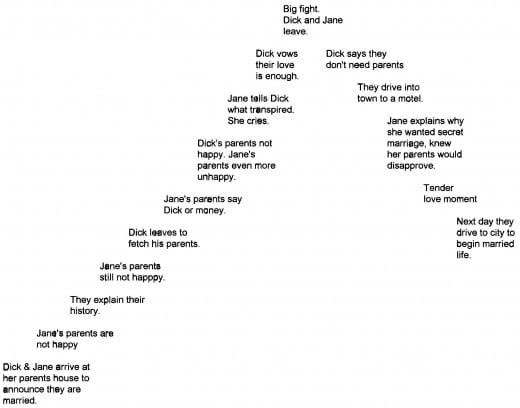
Major and minor scenes
What’s next?
In my mind, I’d follow this right into the complications. In other words, skip any description of wedded bliss (happiness really is quite boring unless you’re living it) and jump ahead fifteen or sixteen years. This will be a series of major and minor scenes leading up to the point of no return. My next scene might start out something like this:
Dick pulled into the driveway, turned off the ignition and heaved a huge sigh. What crisis was he walking into tonight? Honest to God, life as a construction project manager was nirvana compared to his home life these days. His feet felt heavy as lead, each reluctant step more difficult than the last as he walked to the front door and opened it.
The first one to greet him was Puff. “Dad, before Mom gets to you with her complaining, you should know I had a perfectly good reason for not going to school today. You need to hear my side before jumping to conclusions.”
His heart sank like a stone as he stared at the mulish face of his teen-aged daughter, and that stone turned to ice as Jane bustled around the corner. Her face was set in that all-too-familiar angry way; she wore baggy jeans, no make-up and he doubted her hair had seen a comb all day.
“Dick,” she began in her irritating commanding manner. “Before anything else, I need you to go down to the pharmacy right away. Spot’s last bottle of insulin fell and broke on the floor and I haven’t been able to get out of here all day and…”
More powerful is this jump from the love match with the dramatic beginnings and tender love scene, to the domestic turmoil and unrelenting responsibility of family life than any longwinded narrative of the blissful years in between could possibly be.
Every scene must contain conflict, must move the story forward, must begin higher than the scene before, climax higher and drop down into resolution at a higher point than its beginning. There are always two sides to every story: the rising, building side and the falling, resolution side.
But remember, these are major scenes, supported by minor ones. They exist only to build to the master scenes. The master scenes exist only to build to the climax.
There is no room in a novel for “fillers.”(The economy necessitated by word-count dictates it as so, even if the rules of good writing didn’t.) Unless the scene has a definite purpose, it shouldn’t be there at all. And the only purpose is to drive the story to its destination --
-- except for minor supporting scenes used to build character. (An example of this would be the scene in To Kill a Mockingbird, where Atticus Finch shoots a rabid dog. This scene does not drive the main plot: the children and Boo Radley, or the subplot: the murder trial of Tom Robinson, but does build the character of Atticus.) These scenes are usually short, and carefully woven in to the major scenes.
The point of no return – a master scene
In our story, the point of no return is the decision made by Dick to consummate his relationship with Sally. Certainly, we would have brought in little bits of his growing infatuation (and hers) in previous scenes – hints and foreshadowing of what is to come.
Again, I would start this scene by directly entering the action. Our conflict here is not between Dick and Sally (as it is a foregone conclusion she will consent,) but between Dick and his conscience.
“What a day,” he said, wiping the sweat from his brow and glad to be back inside, in the air -conditioning. “But everyone’s happy and it’s all sorted out. Thanks, Sally for all your hard work.”
Sally flashed her whiter than white teeth. “No problem, Dick.” She stretched back her arms, pulling her shirt tight across her breasts.
He remembered when Jane’s breasts sat up high like that, before the children – ages ago. Certainly, Jane had never had such perfect legs, he thought, watching the young woman walk over to the file cabinet, her seemingly endless limbs disappearing into her short skirt.
What was he doing, ogling a woman -- a girl almost – at least fifteen years younger than he? Had he become one of those stereotypes, the punch line of a sour joke, the middle-aged crisis guy? Almost from a distance, as though an observer from afar, he heard himself ask, “How about a drink?”
I’ll let you take it from here, much as I love writing sexy scenes. The point again is no big build-up, no setting the stage, no long-winded explanation as to why they were working late (that’s covered in the dialogue.)
Take your reader directly into the action, into the conflict.
The final complication -- a master scene
In our story, the final complication is not Sally running off with Billy, (that would have been the scene -- a subplot scene -- before this one) but Dick left alone, regretting his past behavior and poor decisions.
How best to show this? Well I suppose we could have him sitting alone in the apartment he shared with Sally, a bottle of Scotch in front of him and a whole slough of black-minded, morbid and remorseful thoughts. But that would be dull and depressing.
How about something like this (and once again, this is not a display of good writing, but an example, only):
“Here you are, home,” Dick said.
The words were barely out of his mouth before the kids clambored out of the car, slammed the doors, tore across the lawn and in the house. After two dreary “Dad’s Days” in his bleak apartment, with nothing but his ancient 21 inch TV to amuse them, they raced to the house, to their computers and phones, ready to reconnect with their friends and real life.
Jane appeared at the door and waved. “Just a minute.” She held a cell phone to her ear, and obviously listened to something amusing, laughing loudly in response. Jesus, she looked good. Had she always been so cool and calm, so together in a natural way, so pretty, so sexy and worst of all, so familiar?
She waved once again and held up two fingers, her signal for two minutes.
He watched her. No, she didn’t have Sally’s long legs and tight body. Hers spoke of maternity, fecundity and comfort. What wouldn’t he give to…
She walked toward him. “Hi Dick. How’re you doing? Have a good weekend with the kids?”
“I’m fine,” he said, though he felt anything but. “The kids are bored.”
She smiled in a knowing way. “In case your lawyer hasn't told you yet, we've got a date, Friday at 2 p.m. – court.”
“Right, court.” The word stabbed him in the heart."Got it."
“See ya then.” She turned and left shouting, “Puff and Spot, you have chores to do.”
Okay, so it's not much of a scene. It's not meant to be. Were we truly writing a novel, we'd have shown the kids at his apartment talking about Mom, his reactions, his dwelling on how Jane had resolved the kids' issues, wondering why he ever left such a good woman, wishing he knew how to make things better -- but this is a hub on the scene approach to plotting and it's already getting long.
Short as it is, we've closed one scene, shown some of Dick's remorse and set up for the next.(And we've shown and shared with the reader, not told, and we've kept our characters true and kept the writer's voice out of the picture.)
Why is this a master scene? Because it sets the ground for the climax. This is the place where we prepare for the final assault on the summit, only two steps away and when we get to our climax scene, we want all the background in place.
The Climax – the major master scene
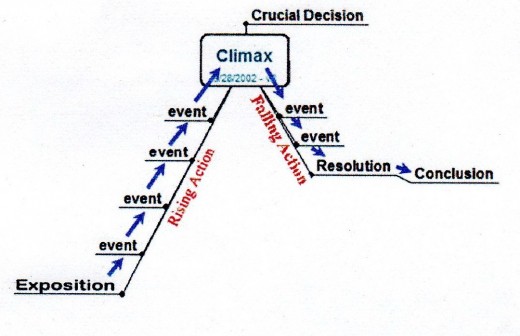
Dick and Jane's climax scene
If ever a scene called for an immediate jump into action and conflict, the climax scene is the one. So here goes:
“This has got to be the easiest divorce I’ve every handled,” Gene said.
“Easy, yeah.” Dick allowed his attorney to exit the elevator before him. Was an easy divorce a good thing, he wondered. Gene seemed happy about it. Easy for Gene, maybe.
Gene pulled on the brass handle of the double doors. “After you.”
Dick walked into the courtroom first. There she was, sitting at the table beside Ms. Smith, her lawyer, a hard talking, ball-breaking sort. But perhaps he was unfair. He’d hate anyone working to cement his stupidity into a legally binding permanence. He sat in the chair Gene pointed to, and craned his neck, trying to get a good look at Jane, willing her to return his regard.
But she didn’t, not at first. She sat chatting to Ms. Smith, seemingly happy as though at any social gathering, not at the death knell of seventeen years of marriage.
They’d been good years, hadn’t they? Except for this last one, of course, this last one where he’d acted on some idiotic impulse and destroyed all that was good in their lives. His hands curled into fists in his lap. His teeth ground down hard. Just as he was ready to jump up and roar, the judge walked in.
“All rise.”
They rose, and sat again. The clerk droned on, case numbers, Jones versus Jones; the judge mumbled nonsensical, unimportant phrases; his lawyer stood and rattled off something and then Ms. Smith did the same. The muffled sound of voices flew around him, until his ears buzzed with some sudden tinnitus.
His heart pounded. Sweat trickled down his neck. His muscles tightened. He could hardly breathe. This must be a dream, some terrible nightmare. Surely he’d wake up soon.
He was on his feet. His mouth opened and shouted, “Jane!”
Dead silence lay over the room. They all stared at him, even Jane with her mouth open in a perfect, soundless “Oh”, and her eyes widened. They glistened with tears. Those were tears he saw, weren’t they?
“Jane,” he repeated in a normal tone of voice. “I don’t want to do this.”
You get to imagine what comes next. (Okay, it's not great, but the whole story line is so feeble and trite, I did my best in the five minutes I allotted to write it.)
I'm sure most of you noticed I used a lot of short sentences (not my usual modus operendi) which increases the pace as we approach the climactic moment. We'll cover more of this in a later hub on pacing.
The climax scene is not the time to do any kind of stage setting, or character building. All of this should be handled in the build up scenes. This is the culmination of everything we've built up from the opening on, and hopefully, it is the most powerful scene of the whole story.
Closings -- event, event, resolution and conclusion -- another master scene
Most of us suffer from a normal tendency to rush our closings, but this leaves the reader hanging. (Listen up guys) Rushing off after a climax is not polite nor is it satisfying.
Make your descent from the summit a relaxed one. In our story, we have two events to cover prior to our resolution. Dick and Jane have a lovely, leisurely dinner where they have the first real conversation in years, followed by a grand romp around the bed. (I'd love to write that one for you, but I don't think hugpages is the appropriate place.)
Our resolution follows: Jane forgives Dick, recognizes her own role in the deterioration of their relationship; Dick has a new appreciation for his wife, is humbled by his foolishness and --
Conclusion: -- they live happily ever after.
Conclusion
I hope this tongue-in-cheek plot exercise of Dick and Jane's story helps you make better sense of our more technical hub on plotting, Good Writing is ..#5. I know I learn best by example.
So what we've covered here:
- we divide our narrative plot description into segments we will build into scenes.
- we identify our master scenes and they are:
- opening
- point of no return
- final complication
- climax
- closing
- These master scenes drive our story to the climax
- The opening scene should begin with the first exciting conflict event. And any required information is handled by backplot (a subsequent hub)
- Master scenes are supported by major scenes
- Major scenes are supported by minor scenes
- All scenes must contain conflict
- All scenes must drive the story forward to the climax -- with one exception: minor scenes that develop character and these are normally short and carefully woven into our major scenes
- The climax scene should include no stage-setting, no new character development, no previously unintroduced elements
- The climax scene should jump directly into action and conflict
- If a scene serves no definite purpose to the story, it shouldn't be there -- no fillers
Just as our plot is a checkmark form, so should our scenes be constructed. Therefore, each scene has it's own opener, point of no return, climax and resolution in some form of checkmark, even if distorted.
Links to other hubs are listed below, as is a link to my website.
I wish you good writing, good plotting and the company of fine characters. Until next time, good-bye.
A link to my webhome and writers' service
- Home
Sharing my work and passion for writing. My website offering editing, mentoring and coaching for new writers. And of course, my current projects.
Links to previous Good Writing Is... hubs
- Good Writing Is...#9 The importance of voice #1 -- writing the child's perspective
The ninth in the Good Writing Is... series begins an exploration of 'voice' in writing. Today's discussion: writing from the child's perspective. The challenge of writing in the child's voice. - Good Writing Is ...#8 Point of view -- the five big questions writers need to answer
There are five big questions the writer needs to answer in developing the point of view of his work. - Good Writing Is...#7-- 10 common mistakes new writers make in writing dialogue.
No skill is more important to the fiction writer than a mastery of the mechanics of good dialogue. Here are the ten most common mistakes new writers make and how to avoid them. The ten rules of dialogue. - Good Writing Is...#5 The plot thickens -- plotting for beginners
#5 in the series, Good Writing Is... deals with plots and how to develop the plot in fiction, whether short story or novel. Called plotting for beginners, we discuss the form of plot, how to map a plot and how to prepare the plot for writing. - Good Writing Is...#4 Why new writers get lost and give up.
Many of you wrote in with comments like, "I'll drag out the old novel" or "I was working on a novel but grew frustrated and put it away." Why does this happen? Why do we so often abandon our work? Come in, and we'll explore those questions. - Good Writing Is ... # 3 What is the most important element of successful fiction?
Number 3 in the series on good writing asks the question: what is the most important element in successful fiction. The answer is good characters. Here we explore what makes good characters, how do we develop them and how to present them. - Good Writing Is ... #2 The author's voice has no place in his work
The second in the series Good Writing Is ... discusses why the author's voice should not appear in his work -- a common mistake by many new writers -- setting the stage. - Good Writing Is ... #1 -- the two biggest mistakes made by new writers
Here are the two pitfalls made by new writers, and a new way to look at telling a story.
NEW!
- Good Writing Is... #10 What you need to understand about paragraphs
As promised, here is #10 in the Good Writing Is... series: everything you ever wanted to know about paragraphs; how to construct them, when to start a new one, what should be in one and how do they fit into the whole of our work both for essays and f

